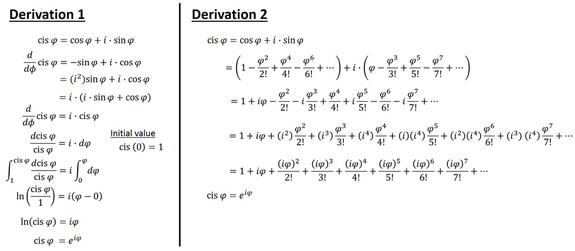Jaqaur – Reading03
1a. I think that mathematics, particularly mathematical proofs, exhibit effective complexity. Technically, there isn’t much disorder (or any at all), but they show a flawless transition from complexity to simplicity, or vice versa. They can be incredibly complicated, but still beautiful. Below is a picture of a proof of Euler’s identity, which is often called “the most beautiful proof in mathematics.” I guess on a scale from total order to total disorder, this would definitely be on the total order side, but there is still a great deal of variation from one proof to another, such that some don’t even look like math anymore.

1b. As much as the Problem of Meaning intrigues me, I think enough of my classmates have answered it the same way I would have to warrant me discussing another problem. So, I will talk about the Problem of Uniqueness, another question which has bothered me in the past. Before I was even exposed to computer-based art as I know it, I was shown prints: pictures carved into a piece of wax, metal, or wood, covered in ink, and then pressed onto paper after paper. This made me a little uncomfortable. No matter how good the art was, the fact that it was mass-produced made it feel less real to me, and certainly less valuable then something that was painted by hand. I remember just a few years ago I saw a rack of 20 copies of the same painting in a “World Market,” and I said “Wow. Before I saw how many there were, I thought it was a real painting.”
So, even before I was presented with this question in the reading, I guess I had an answer: to me, mass produced artwork is less valuable than one-of-a-kind artwork (even if there are slight variations in some generative art), if for no other reason than supply-and-demand economics. That being said, I don’t want to negate the actual artistic thinking that goes into writing the code or carving the initial print block that leads to the mass-produced art–that act can be incredibly creative and skillful. Rather, I think that the actual “art” in this scenario is the code or the block rather than the pieces that get generated. When a musical is performed every night, the true art is in the writing, direction, choreography, and design rather than the individual performance. Similarly, each piece of generated “art” is but a child of the original artwork, like a poster of a Picasso painting. While they can be beautiful, I think their intrinsic “value” is reduced by their quantity.